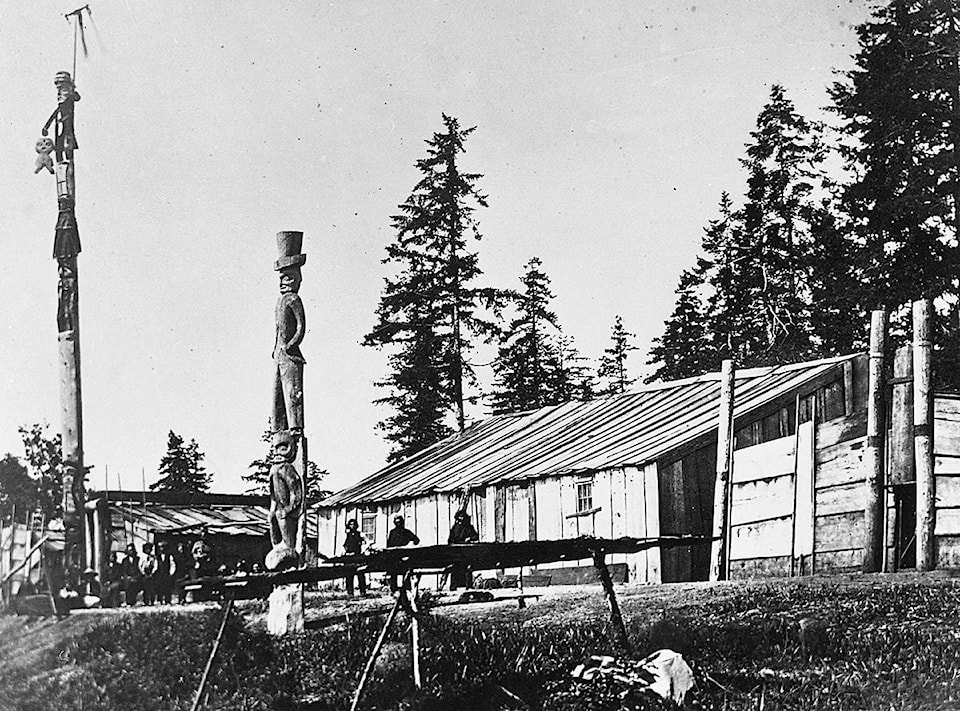In the year 1017, the territories we now know as Maple Ridge and Pitt Meadows were the homeland of the Katzie people and their friends and relatives.
They had already occupied this land for thousands of years.
Signs of human activity would have been everywhere, but in a much more subtle manner than we see today. The Katzie did most of their travel by water, which makes no mark except in places where the canoes were pulled out and the trails began.
Another sign might be a row of poles pounded into the bed of the Alouette River or Kanaka Creek, where weir fencing would be installed during salmon runs.
In the seasonal meadows near the Pitt River, there might also be tall poles with nearby piles of stones, waiting for the weighted nets that would be erected during waterfowl migration seasons.
Only the most perceptive eyes would spot the agricultural practices conducted in the cranberry bogs and wapato beds (a fleshy root crop somewhat like a potato), where competing weeds were removed to encourage the more valuable plants.
The largest sign of human habitation, then as now, would be in the village and camp sites that would dot the landscape. Their locations fit a basic human logic, which we, for the most part, still pursue today.
For a winter village site, they looked for a place that was above the water table during most of the year, that had good fresh water nearby, and that had a supply of firewood and access to wild game during even the worst winter weather.
Katzie First Nation had their primary villages on the Fraser River, from the present location of their reserve and extending east to include the land under Hammond Mill, where many prehistoric artifacts have been recovered, and at Sturgeon slough and the area around the confluence of the North and South Alouette Rivers.
While Katzie people were too sensible to consider the middle of winter to be the beginning of anything, they did consider mid-winter to be a time for celebration and family gathering.
People would choose their winter home before freeze-up and be prepared to stay there until there was enough open water to permit travel.
The winter dance season was probably the most eagerly anticipated time of the year - like a Christmas holiday that lasted for two months.
Winter dances were a lot more than just dancing. More a cross between opera and ballet, the dances were a dramatic form of storytelling that taught while they entertained. Masks that were hidden away during most of the year would be brought out and worn in the smoky environment and low light of the longhouse, dramatically converting the wearer into a being from the supernatural realm.
Children would be spellbound by the drama of the scene, while their elders thrilled with their own memories of when they had first witnessed the stories.
The winter ceremonial season was also a time for games and pastimes - contests of skill and endurance, plus the great fun of slahal – a gambling game that requires sleight of hand and a good poker face for success.
It was also an opportunity for family to have long visits with relatives who may have spent the previous winters in other villages far away.
While we have no time machine to look back at what went on at what we would call New Year’s Eve of the year 1017, we can imagine a frozen landscape along the Fraser River with the only warm spot for miles being the largest Katzie longhouse.
The people gathered snug inside would share a feast, live theatre, games of chance and the loving presence of extended families who had shared these times for thousands of years.
To gather and celebrate against the cold is a human tradition that transcends time and culture.
Val Patenaude is director of the Maple Ridge Museum.
